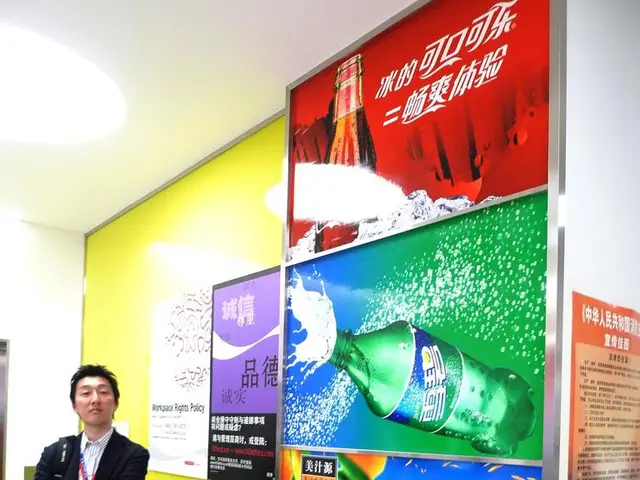Focus on Senior Citizens in New York: Prioritizing the Needs of the Elderly Population in the City
In a significant move to address the challenges faced by the growing older population, the Master Plan for Aging (MPA) has been unveiled in New York City. The comprehensive 10-year strategic framework aims to improve housing, healthcare, social services, and community integration for older adults and people with disabilities.
Released on June 30, 2025, the MPA presents over 100 proposals focused on nine key pillars: informal caregiver and workforce support, modernization and sustainability of healthcare and facilities, prevention, wellness promotion, and access, housing access and community development, affordability of basic necessities, access to services and engagement in underserved communities, social engagement of older adults, combatting elder abuse, ageism, ableism, and stigma, and technology access and development.
The MPA, part of New York State's first comprehensive strategic framework, emerged from extensive multi-agency collaboration and public input. It is a response to demographic shifts, with over 25% of New Yorkers expected to be aged 60 or older by 2030.
Key proposals in the MPA include enhancing support for family caregivers, modernizing residential care and community-based facilities, expanding wellness programs and preventive health services, increasing the availability of affordable, accessible, and community-integrated housing, and improving equitable access to aging services for historically underserved populations.
Commissioner Lorraine Cortés-Vázquez of the New York City Department for the Aging stated that supportive community care systems for older adults with health issues can yield a better quality of life while remaining cost-effective. She emphasized that these systems cost between $50,000-$58,000 per year compared to $185,000 per year for nursing home care.
However, concerns have been raised about the social safety net protecting older adults. Funding to the Older Americans Act, Adult Protective Services, Medicaid, Medicare, and SNAP benefits is under threat, potentially affecting the lives of nearly 73% of older adults who are heads of households, with some relying entirely on Social Security income to get by.
The MPA also highlights critical challenges such as workforce shortages in aging services, housing affordability and accessibility, facility modernization, Medicaid reform, technology access disparities, social isolation, and elder abuse prevention.
In addition, the plan aligns with pending state Medicaid initiatives, such as Section 1115 waiver amendments, which include expanded caregiver supports and value-based payment models focused on older adults.
As the social safety net faces potential cuts, city and statewide advocates are urging for greater investments in older adults' economic security, such as pension, personal savings, or Social Security. They are also advocating for investments in those who can benefit from a community care model.
The state has allocated $50 million to address program shortages and workforce issues at local aging agencies. However, Daveth Forbes-Thomas, CEO of NYC Health + Hospitals/McKinney, stated that less than 1% of the budget goes towards the elderly, indicating a lack of value placed on them.
The plan also outlines caregiving career pipelines and addresses the caregiving crisis, with an estimated 1.3 million caregivers living in New York City, most of whom are women. Caregivers in the city spend nearly 25% of their income on caregiving.
The MPA is a comprehensive blueprint for systemic transformation aimed at supporting the rapidly growing older population and ensuring equity, dignity, and independence for older New Yorkers and those with disabilities. It is a crucial step towards a more inclusive society that values and supports all of its members, regardless of age.
- The housing sector is significantly addressed in the Master Plan for Aging (MPA) to ensure the availability of accessible and community-integrated homes for older adults.
- The MPA aims to modernize healthcare and facilities to provide better services for older adults and those with disabilities.
- Prevention and wellness promotion are key aspects of the MPA, with a focus on expanding preventive health services.
- The MPA proposes increasing affordability of basic necessities like transportation to improve the lives of older adults.
- The MPA emphasizes the need for technology access and development to enhance the quality of life for older adults and those with disabilities.
- The MPA aligns with forthcoming Medicaid initiatives, such as Section 1115 waiver amendments, to expand caregiver supports.
- The MPA addresses the workforce crisis in aging services by establishing caregiving career pipelines.
- The MPA recognizes the importance of workforce sustainability and Modernization of residential care and community-based facilities.
- The MPA aims to combat elder abuse, ageism, ableism, and stigma to create a more inclusive society.
- The MPA strives to improve equitable access to aging services for historically underserved populations.
- The MPA highlights the critical need for addressing social isolation among older adults to prevent chronic diseases such as depression and anxiety.
- The MPA targets the issue of workforce shortages in aging services as a significant challenge that needs immediate attention.
- The MPA proposes increasing the availability of eye-health, hearing, skin-care, respiratory-conditions, digestive-health, and cardiovascular-health services for older adults.
- The MPA advocates for mental-health, men's-health, and women's-health services to address the specific needs of these groups.
- The MPA emphasizes the importance of nutrition in promoting health and wellness among older adults.
- The MPA aims to prevent and manage cancer, chronic-diseases, and neurological-disorders in the older population.
- The MPA addresses the needs of older adults with special health conditions, such as autoimmune-disorders and medical-conditions.
- The MPA encourages the implementation of fitness-and-exercise programs to promote workout routines and overall health among older adults.
- The MPA proposes investing in education-and-self-development and personal-growth opportunities for older adults.
- The MPA recognizes mindfulness as a valuable tool for stress management and mental well-being among older adults.
- The MPA advocates for responsible-gambling practices, considering the growing popularity of casino-and-gambling activities in cities like Las-Vegas.
- The MPA addresses the risks and challenges associated with casino-games like slots, poker, roulette, and blackjack.
- The MPA aims to educate the public on the history, myths, trends, and policy-and-legislation surrounding casino culture.
- The MPA emphasizes the dangers of car-accidents, fires, and other accidents that disproportionately affect older adults.
- The MPA proposes improving the workplace-wellness sector to create a supportive environment for older workers.
- The MPA encourages the adoption of productivity, career-development, and job-search strategies to help older adults remain employed.
- The MPA addresses the unique challenges faced by older adults, such as learning and goal-setting, to ensure their continued growth and development.
- The MPA advocates for online-education and skills-training to prepare older adults for the digital age.
- The MPA encourages parents to seek resources and support to meet the needs of their aging parents and themselves.
- The MPA serves as a catalyst for social reform, promoting inclusivity, dignity, and independence for all members of society, regardless of age.




